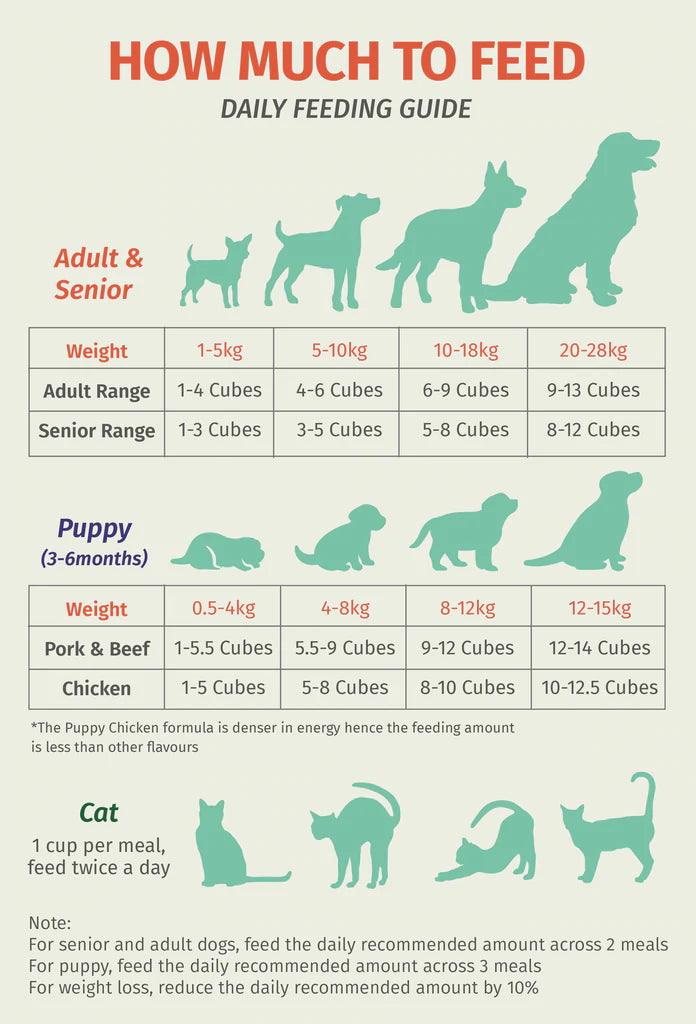[tab title="Feeding Guidelines"]
There are many reasons why you may want to consider switching to fresh feeding for your dogs and cats. It could be that your puppy or kitten is growing or perhaps, your veterinarian recommended a dietary change. Check out our simple transition guide to find out how to change your dog's or cat's food.




Transitioning To PetCubes
Take note: when changing your pet’s diet, we recommend doing it gradually. Changing your dog or cat food too quickly might lead to tummy upset, diarrhea, vomiting, or even loss of appetite.
Day 1 & 2 of transitioning to PetCubes: Start by offering your pet’s daily portion in a ratio of 75% old food to 25% PetCubes.
Day 3 & 4 of transitioning to PetCubes: Gradually decrease the amount of old pet food to 50% and increase PetCubes to 50%.
Day 5 & 6 of transitioning to PetCubes: Move on to mixing 75% PetCubes’ new dog or cat food with only 25% old food.
Day 7 & 8 of transitioning to PetCubes: You may start feeding 100% PetCubes.
Gentle Reminder
Always remember to keep PetCubes pet food frozen until ready to use. Do not thaw at room temperature a few hours before feeding.
Warming the food in a microwave is also not recommended as it will alter the food composition.
PetCubes’ frozen food for dogs and cats is carefully chosen, prepared, and stored in such a way that feeding it to your pets in its natural, thawed state is not only safe but also ensures the delivery of high-quality nutrients.
More on PetCubes
There has been a never-ending debate as to which type of diet works the best for your pet. However, there is no one-size-fits-all approach when it comes to pet nutrition. Each pet is unique and has different nutrient requirements and preferences. PetCubes offers both gently-cooked and raw frozen dog and cat food so you can choose the one that best suits your unique pet.
[/tab]
[tab title="Preparation Guidelines"]
PetCubes’ Gently-Cooked range is cooked at a controlled temperature of 80°C, enough to kill bacteria while retaining the bioavailability of most nutrients. The cooked pet food is then flash-frozen to eliminate the need for additives or preservatives.
The feeding preparation is simple. All you have to do is transfer the desired portion from the freezer to the chiller, a night before feeding. This is to thaw the frozen dog and cat food overnight in the refrigerator, where it will remain at a safe, constant temperature — at 4° C or below.
[/tab]
[tab title="Disclaimer"]
The presentation, packaging, size, and measurements of this product are subject to change by the manufacturer without notice. While images and descriptions listed are only meant to be guidelines, the integrity of the product shall remain the same.
[/tab]
[/tabs]







Add A Review
Your email address will not be published. Required fields are marked
Your Rating